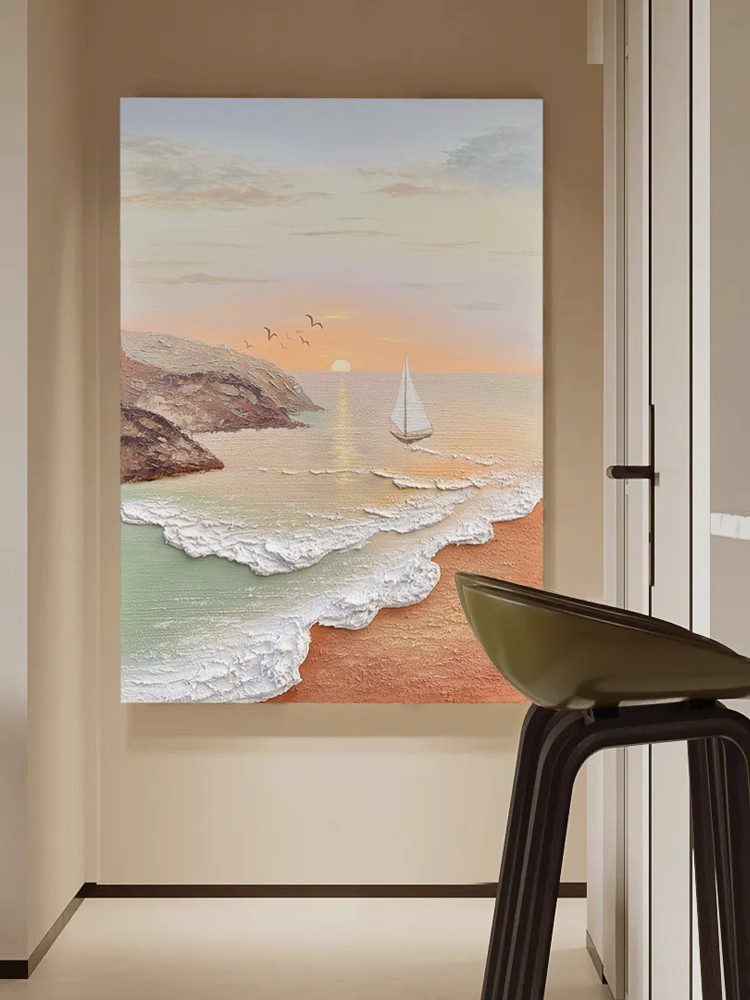The Role of Hand-Painted Oil Paintings in Hospital Environments: Enhancing Healing and Well-Being
Hospitals are often associated with clinical sterility, which can contribute to anxiety or discomfort for patients and visitors. Integrating art, particularly hand-painted oil paintings, into healthcare spaces offers a unique way to transform these environments into calming, human-centered spaces. Below, we explore how such artwork contributes to emotional, aesthetic, and functional improvements in medical settings.
1. Creating a Soothing Atmosphere Through Visual Storytelling
Hand-painted oil paintings have the ability to evoke emotions and distract from the stress of medical procedures. Unlike generic prints, original artworks often feature intricate details and organic textures that engage viewers on a deeper level. For example, a serene landscape with soft hues of blue and green can promote relaxation, while abstract compositions with gentle curves may reduce feelings of tension. Studies suggest that exposure to nature-inspired art in hospitals can lower cortisol levels, aiding in stress reduction for both patients and staff.
The use of warm, muted colors in oil paintings also plays a role in setting a tranquil tone. Unlike harsh fluorescent lighting, these artworks provide a visual anchor that encourages mindfulness. A painting depicting a peaceful garden or a quiet coastal scene can serve as a mental escape, offering patients a momentary reprieve from their surroundings.
2. Fostering Connection and Personalization
In large hospitals, spaces can feel impersonal and overwhelming. Hand-painted oil paintings add a layer of individuality to corridors, waiting rooms, and patient areas. Unlike mass-produced decor, original artworks reflect the creativity and cultural values of the institution or community. For instance, a hospital in a coastal region might feature local seascapes, while a pediatric ward could display whimsical animal scenes to engage younger audiences.
This sense of place-making extends to staff and visitors as well. Artworks can spark conversations, creating shared experiences that humanize the clinical environment. A painting in a staff lounge, for example, might become a focal point for relaxation during breaks, fostering camaraderie among healthcare workers.
3. Supporting Wayfinding and Spatial Orientation
Navigating a hospital’s labyrinthine halls can be challenging, especially for patients with cognitive impairments or those under stress. Strategically placed oil paintings can act as visual landmarks, aiding in orientation without relying on text-heavy signage. A vibrant mural near an elevator bank or a series of themed paintings along a corridor can help users remember their location and destination.
This approach is particularly effective in pediatric or geriatric settings, where clear, non-verbal cues are beneficial. For example, a colorful mural depicting animals or seasons can guide children to play areas, while calming abstract pieces might mark quiet zones for elderly patients. By integrating art into the architectural flow, hospitals can improve accessibility and reduce confusion.
4. Enhancing Acoustic Comfort and Reducing Noise Pollution
The clinical hum of machinery, footsteps, and conversations can create a cacophony that disrupts healing. Oil paintings, especially those with thick impasto textures or layered compositions, can absorb sound waves, subtly dampening ambient noise. This acoustic benefit is particularly valuable in high-traffic areas like lobbies or cafeterias, where reducing reverberation improves communication and comfort.
Additionally, the presence of art encourages quieter behavior. Patients and visitors are more likely to speak softly or move gently when surrounded by aesthetically pleasing environments. This shift in atmosphere contributes to a more respectful and healing-oriented culture within the hospital.
Conclusion
Hand-painted oil paintings are more than decorative elements; they are tools for enhancing the human experience in healthcare settings. By promoting relaxation, fostering connection, aiding navigation, and improving acoustic comfort, these artworks address both emotional and practical needs. As hospitals continue to prioritize patient-centered care, integrating original art into their design becomes a vital step toward creating spaces that heal body and mind alike.
